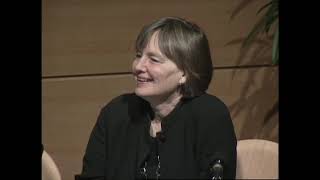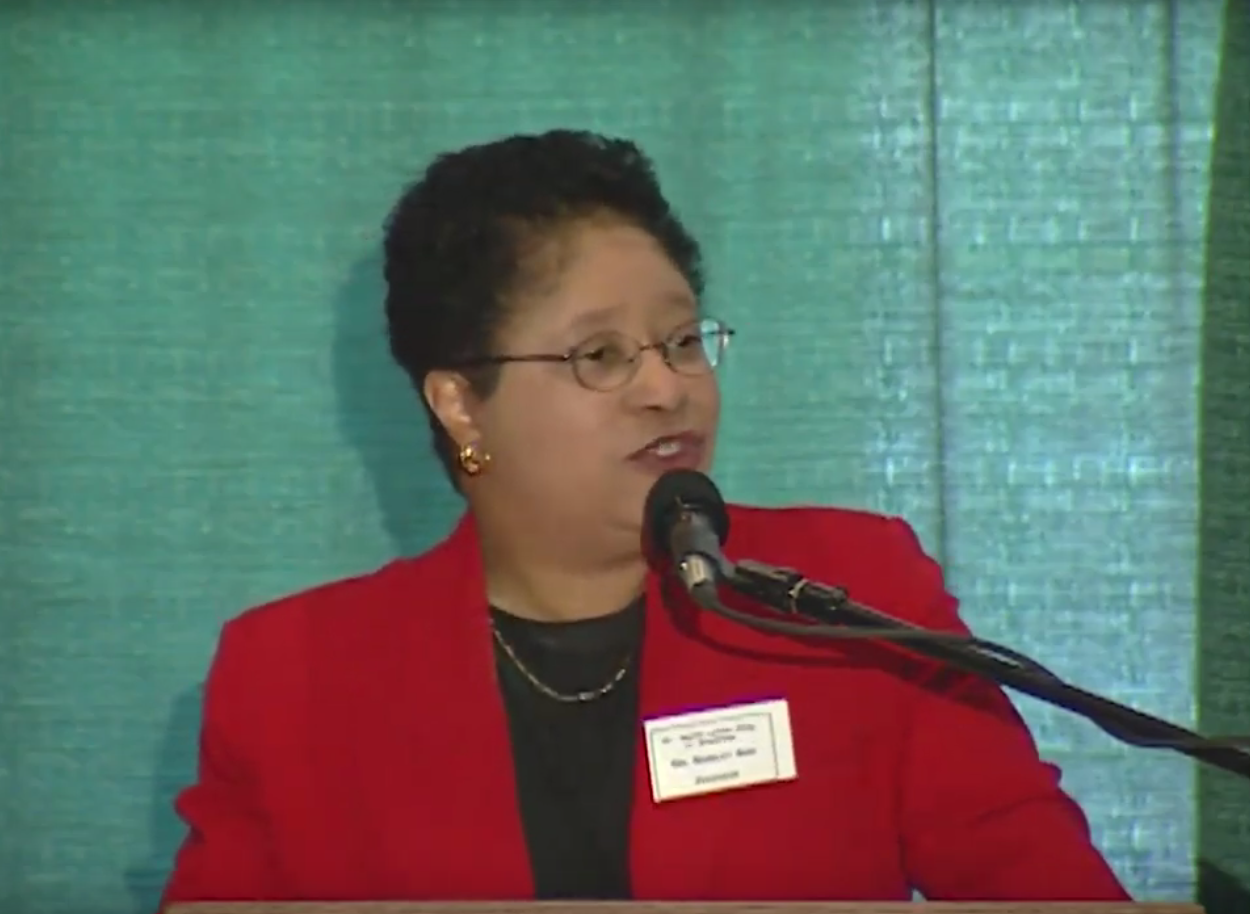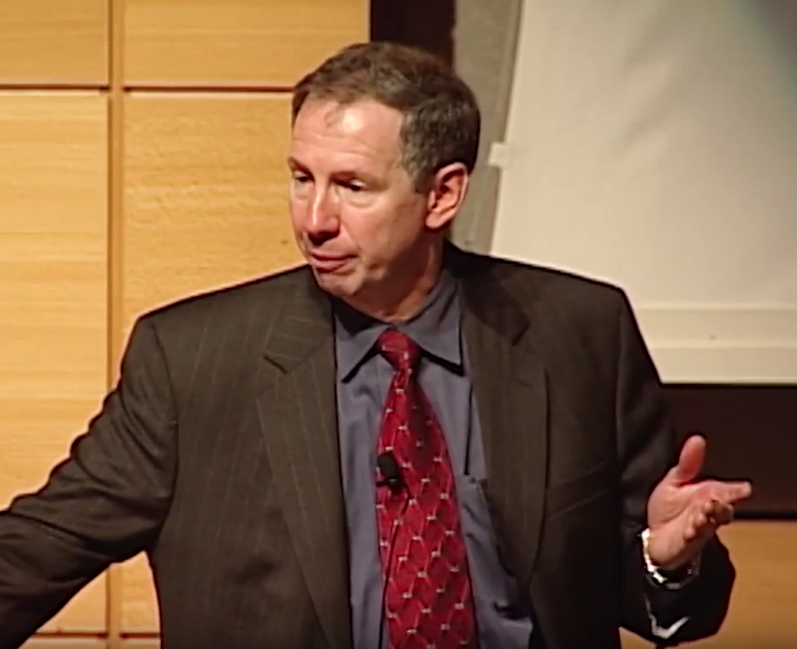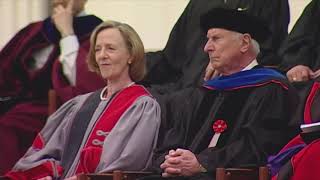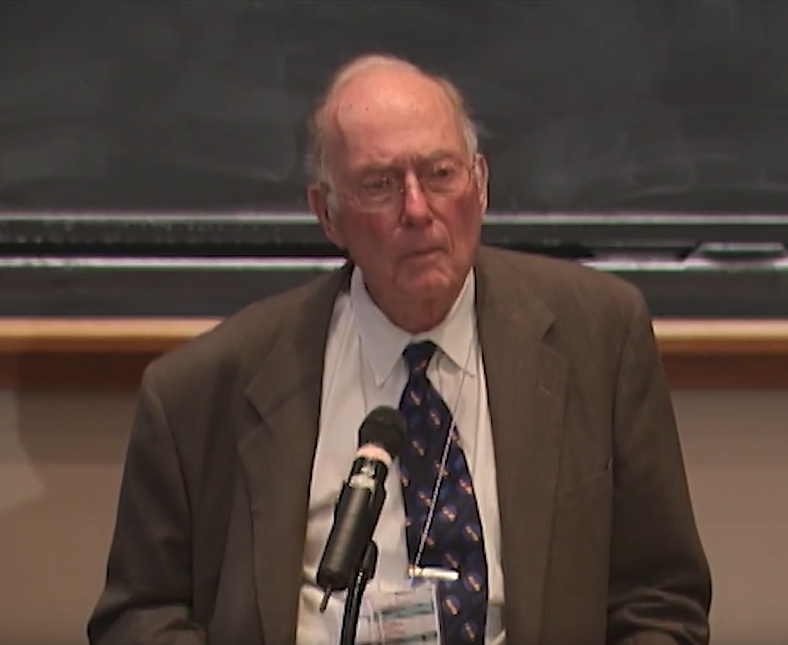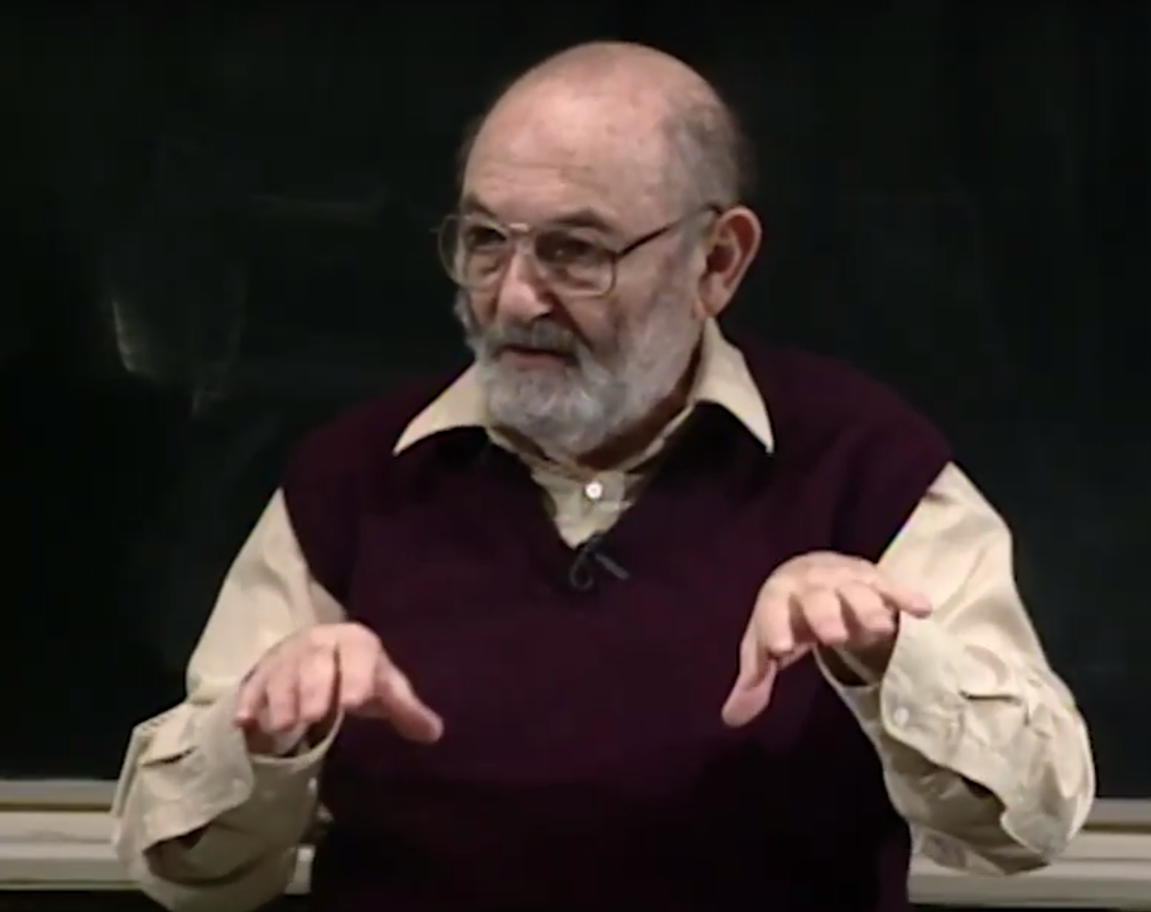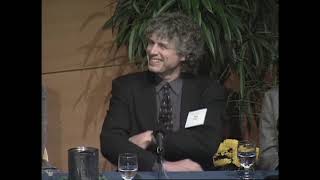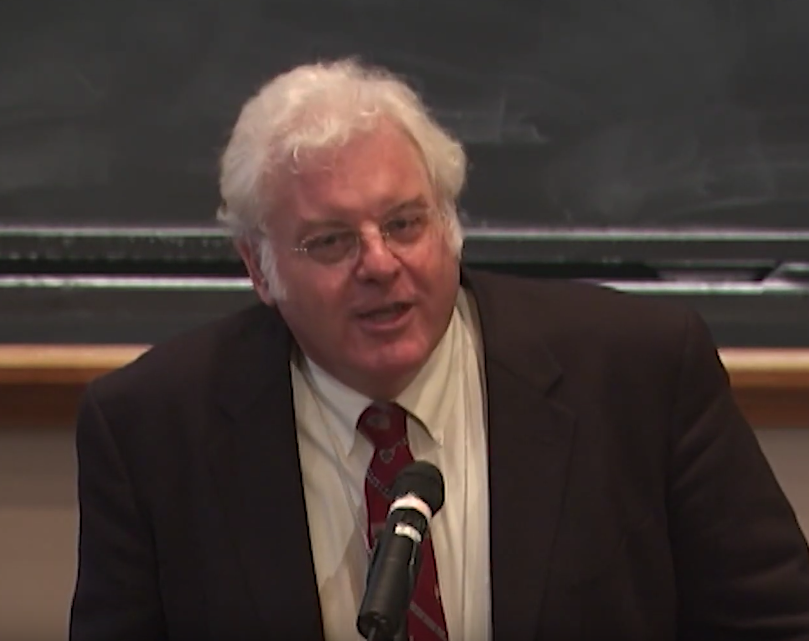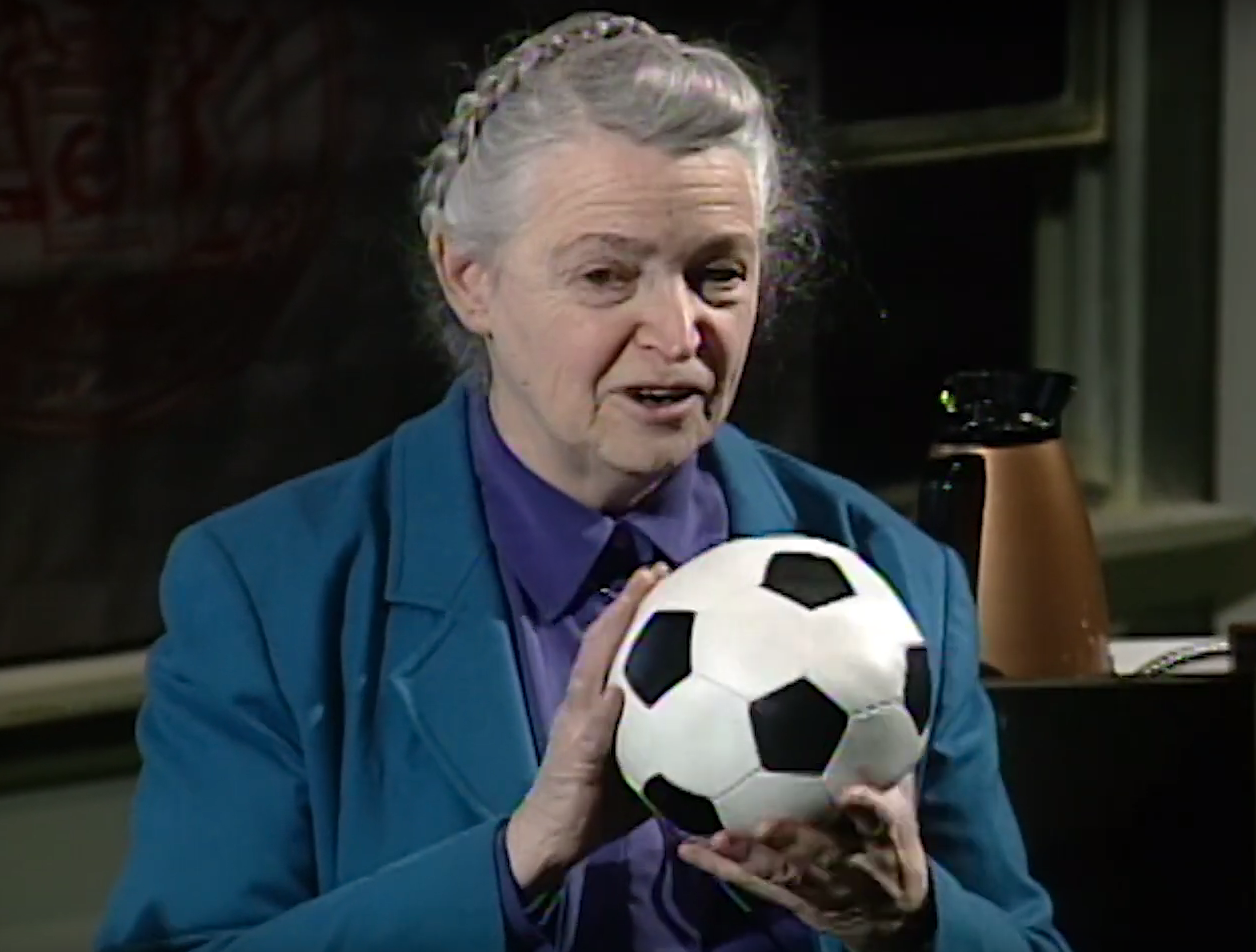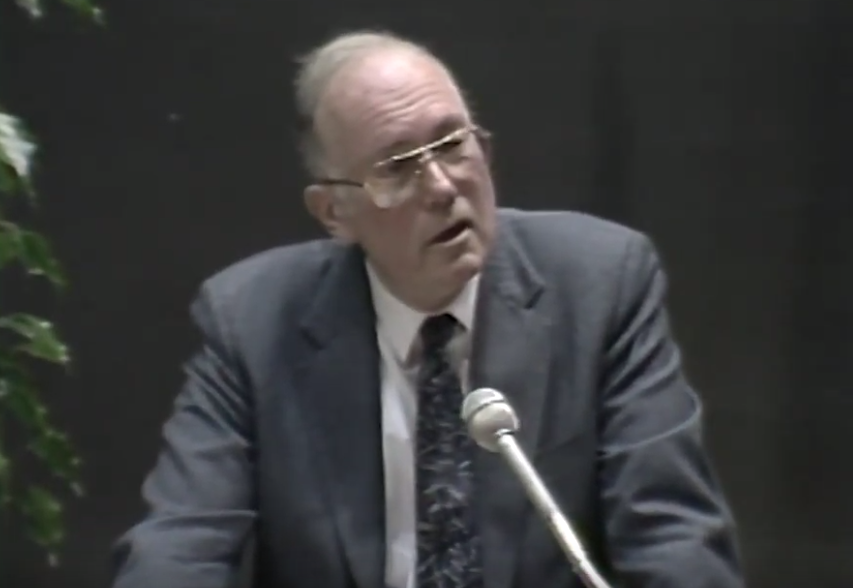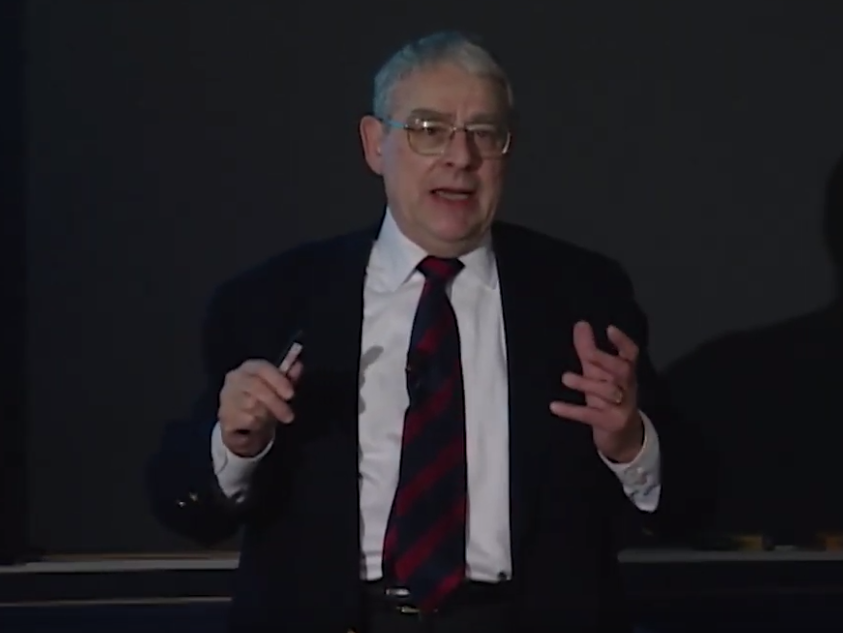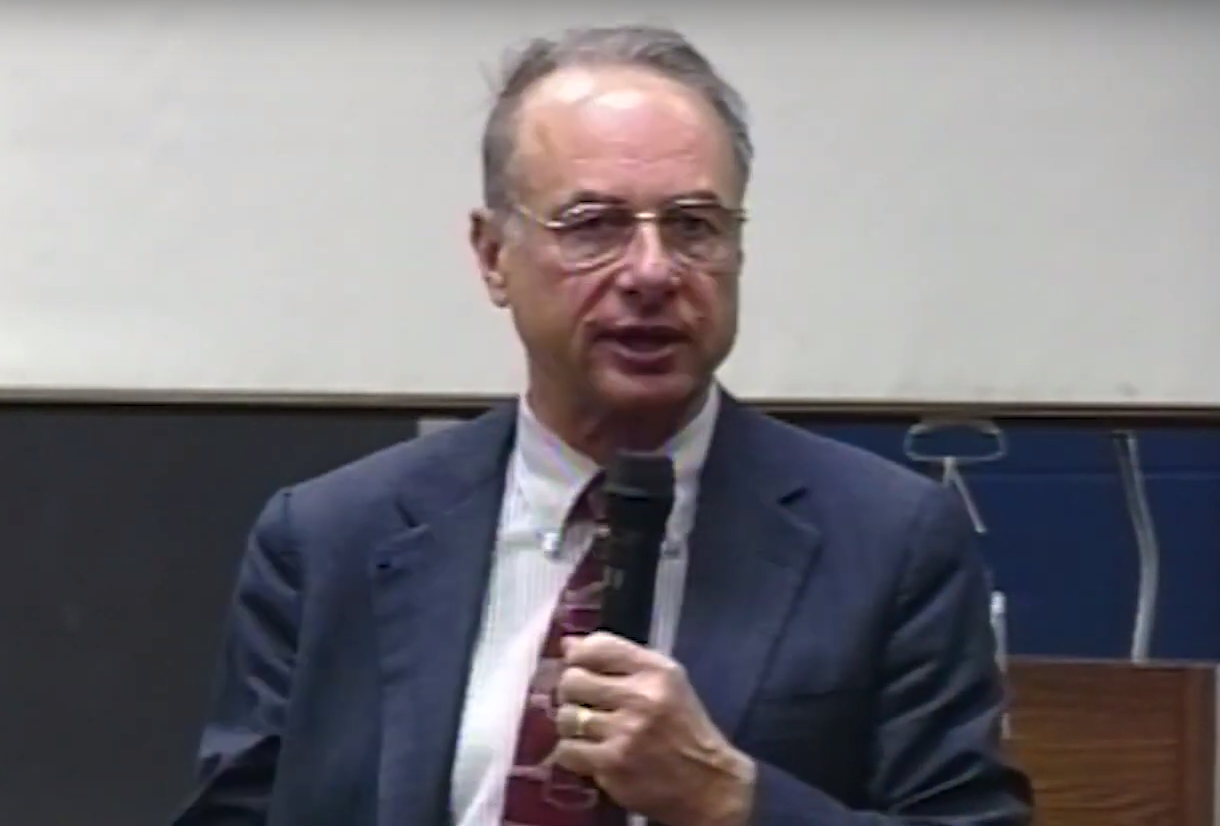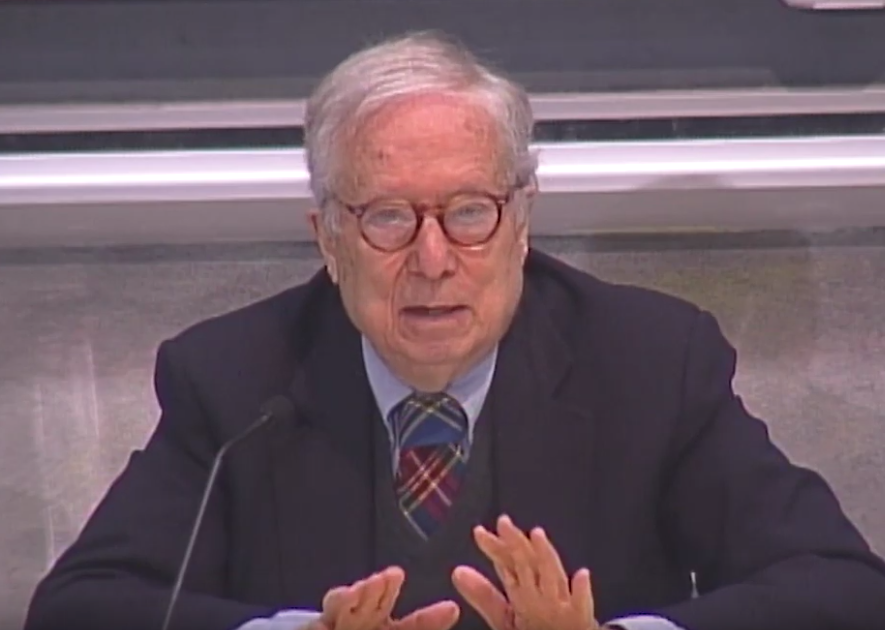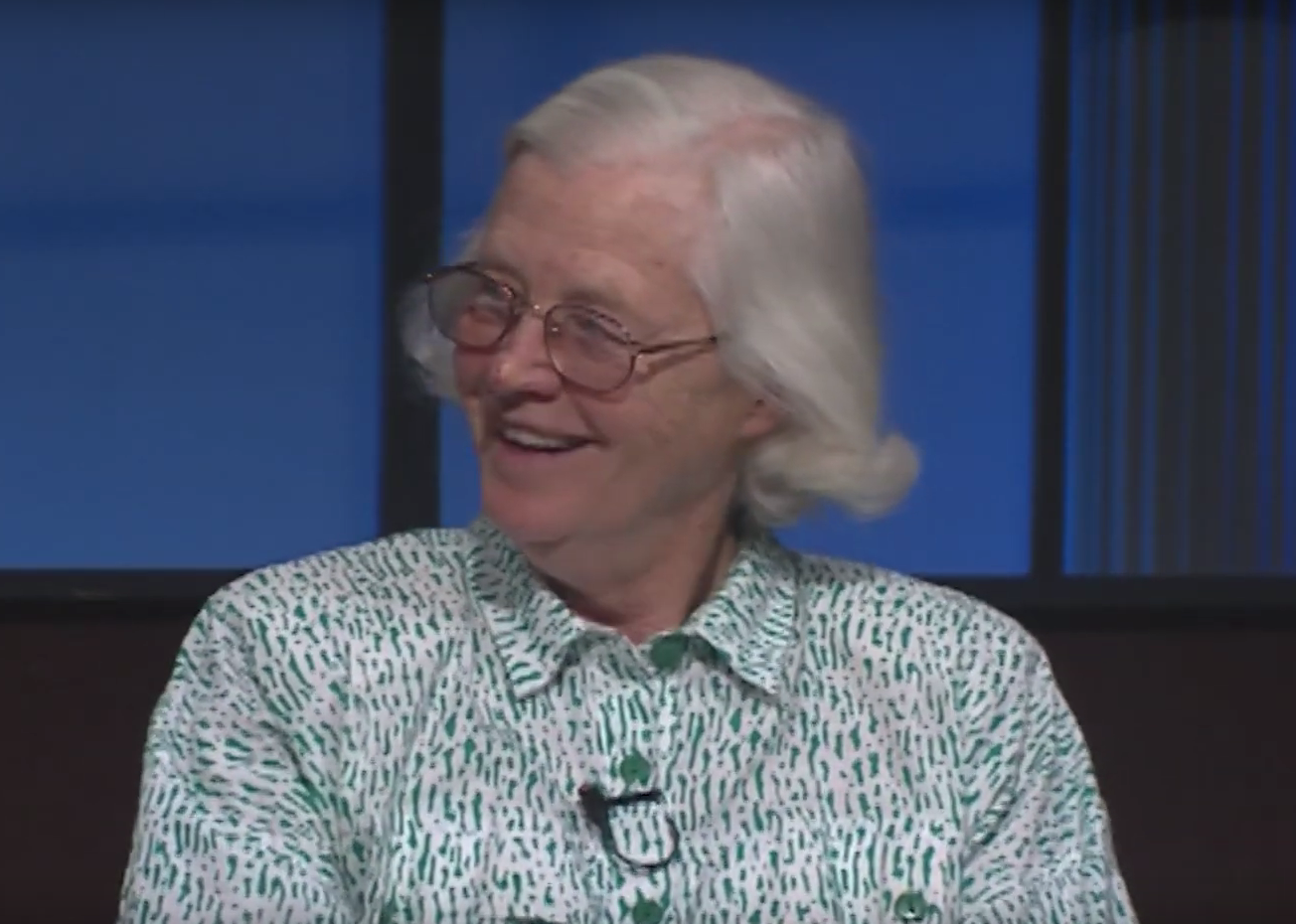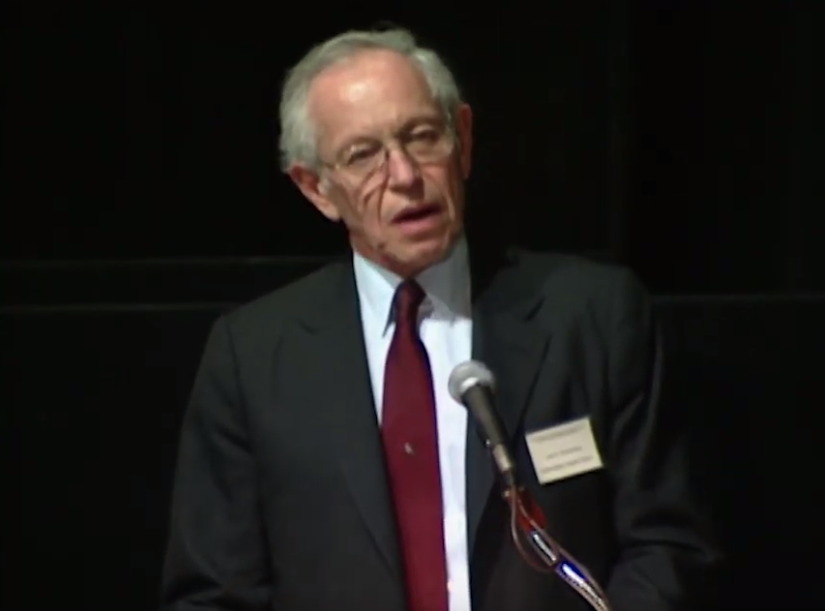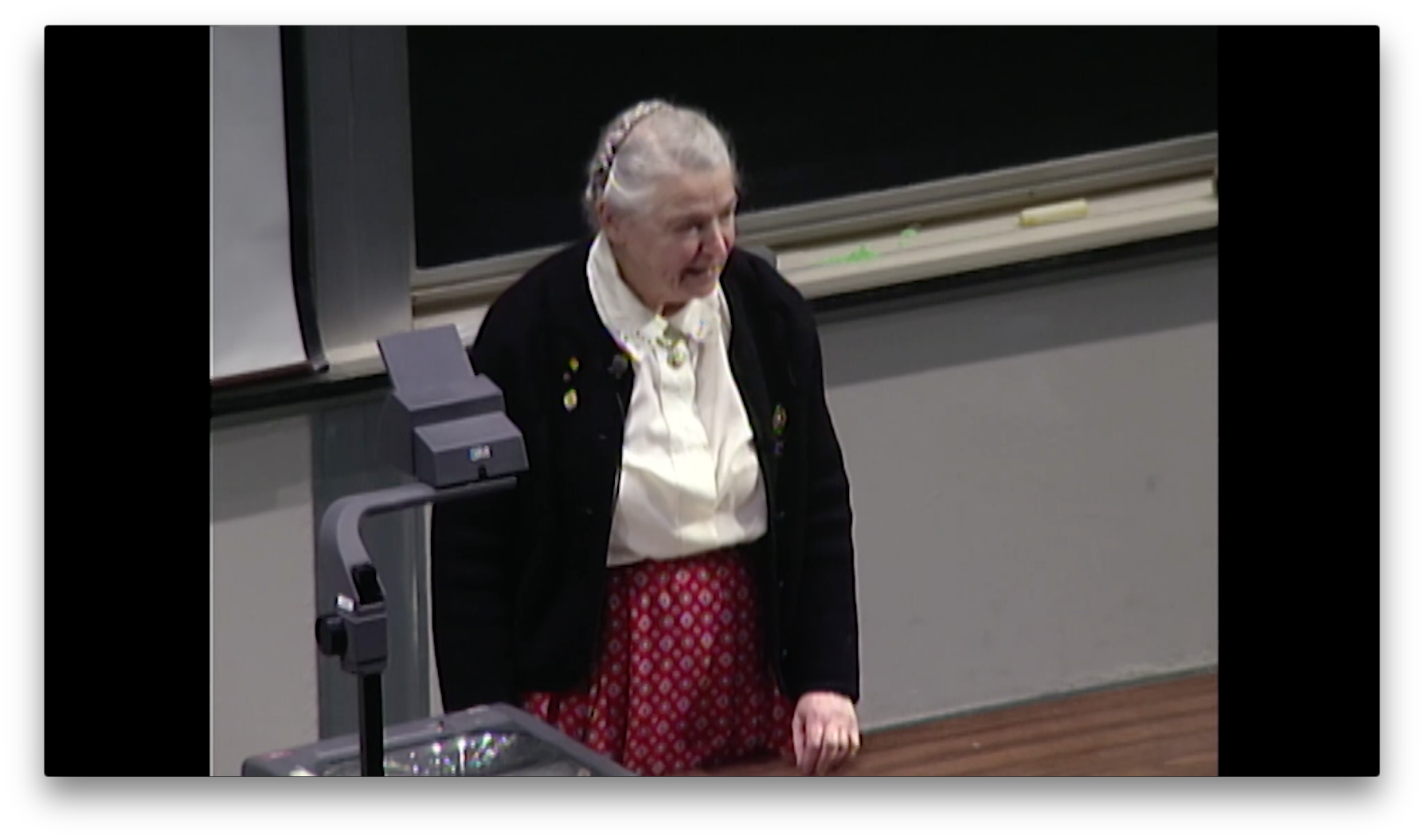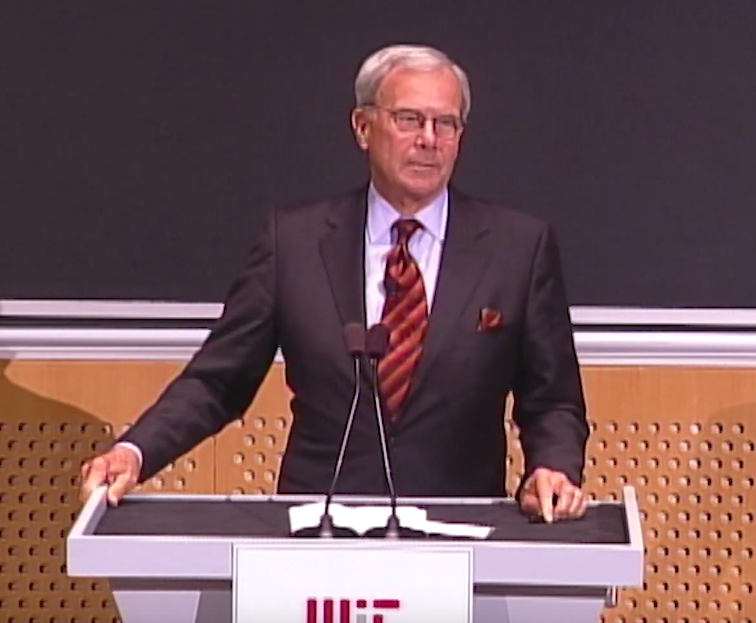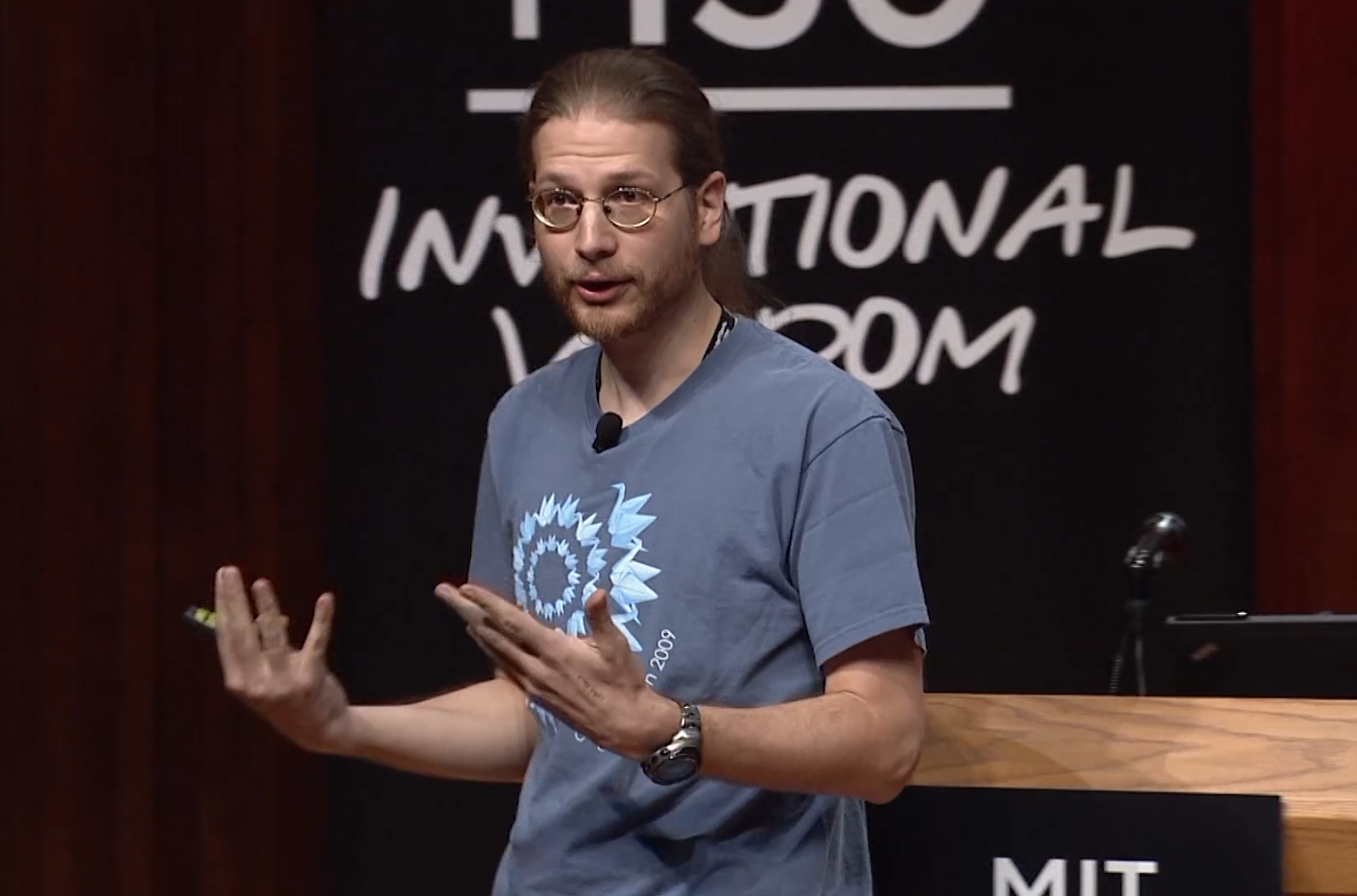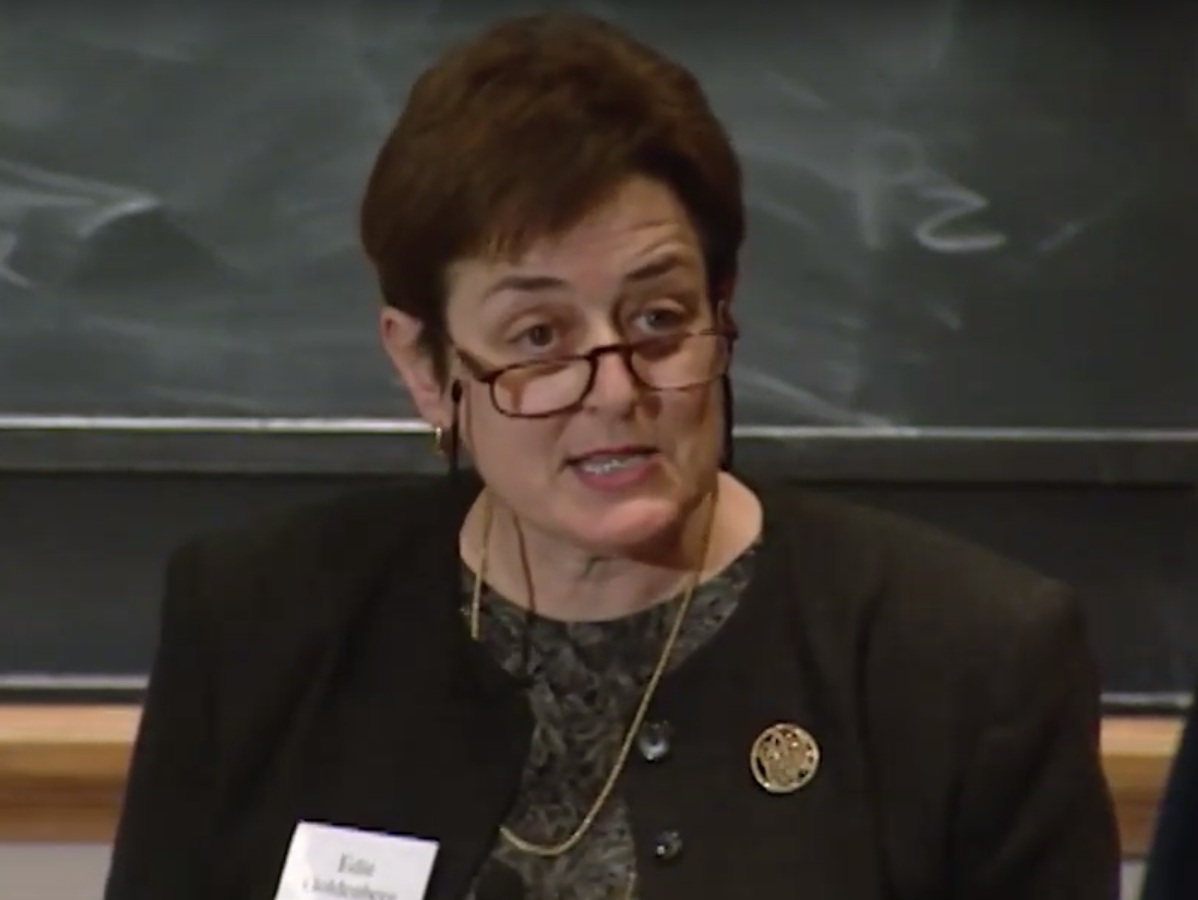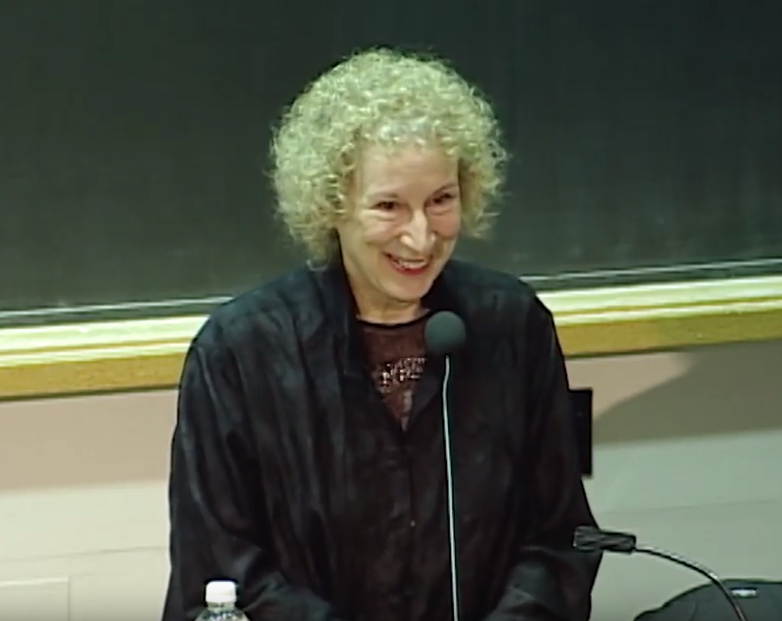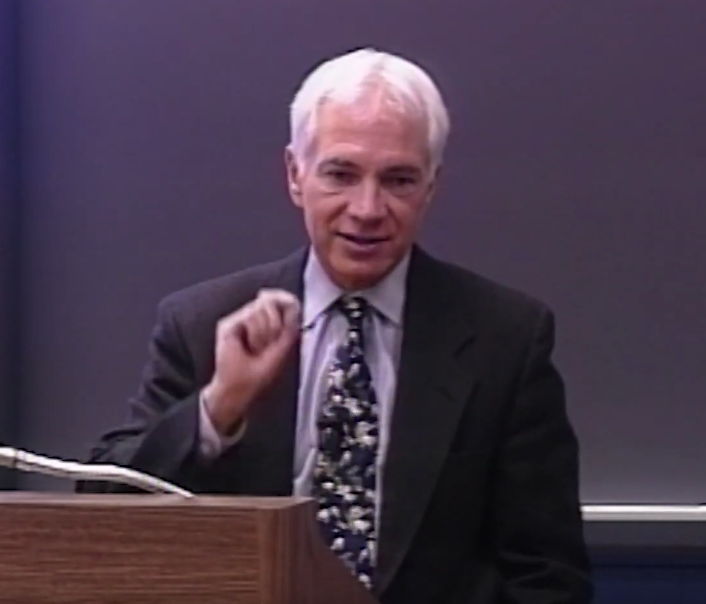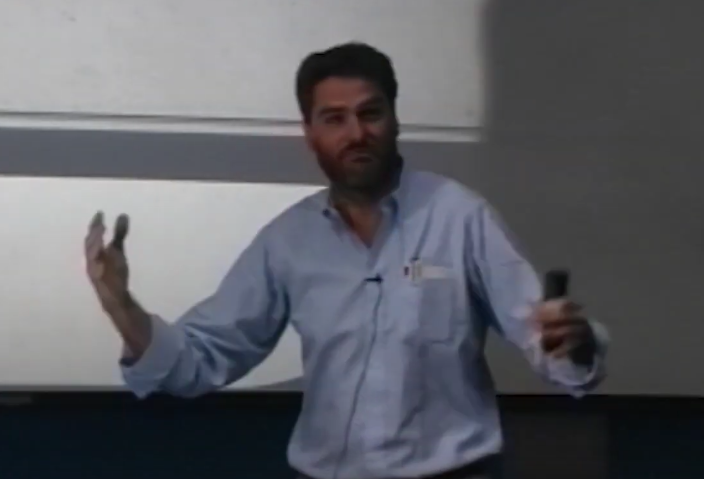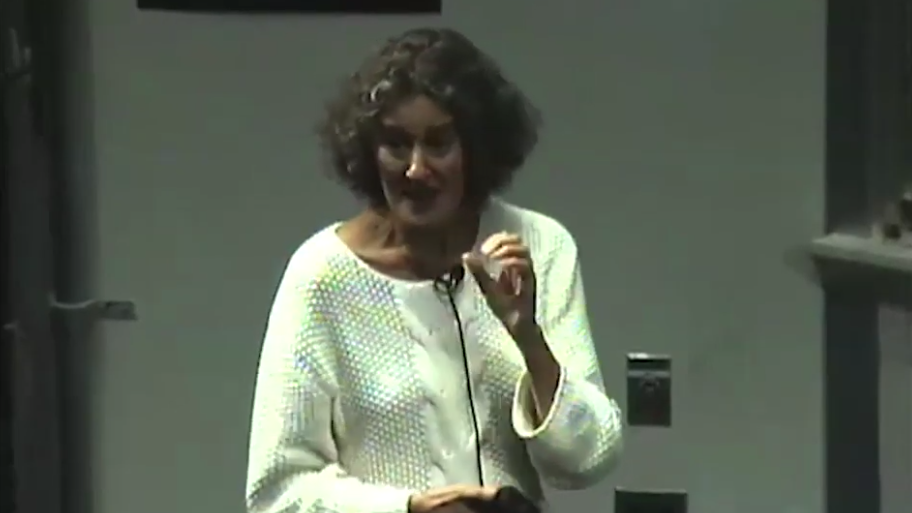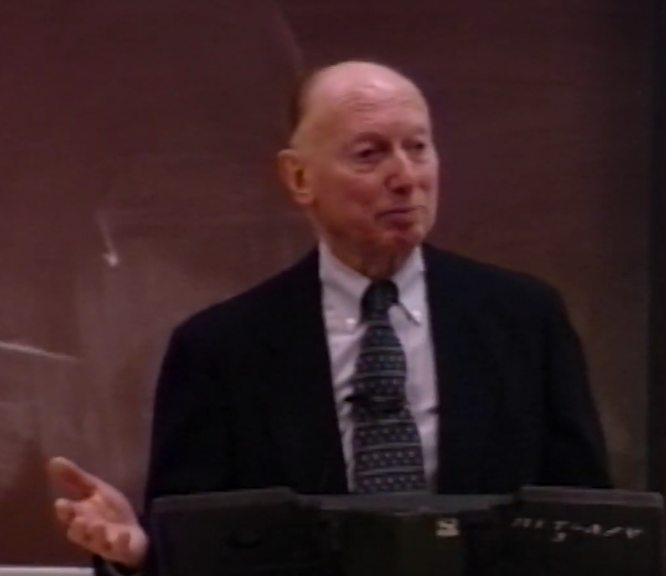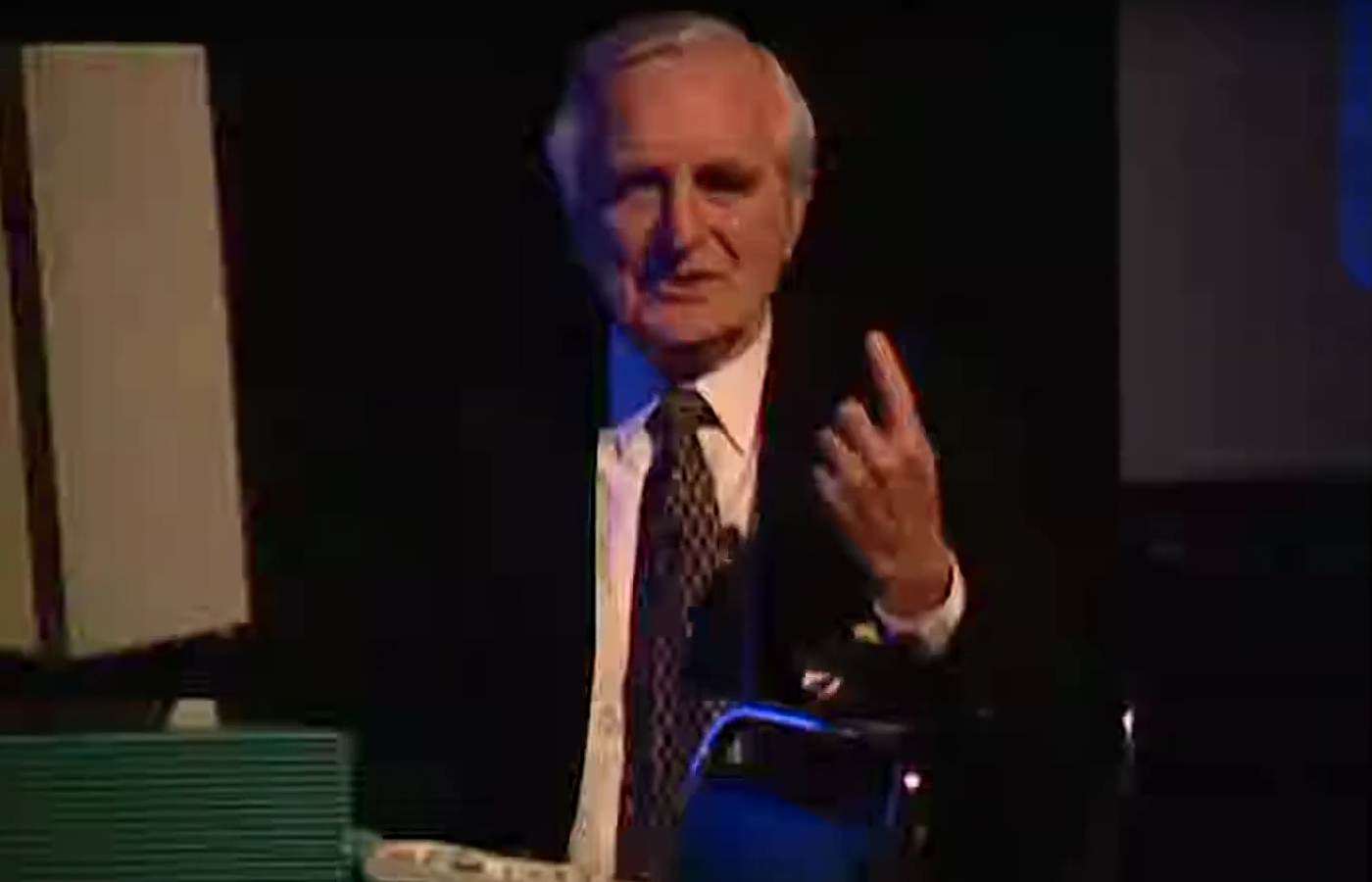Jerome I. Friedman, “New Horizons in Particle Physics” - LNS46 Symposium: On the Matter of Particles
[MUSIC PLAYING]
MODERATOR: Title is New Horizons in Particle Physics. Jerry, please.
FRIEDMAN: Thank you, Francis. Before I began my talk, I want to say a few personal remarks. It's a great pleasure to be here to help celebrate LNS 46. I entered the lab in 1960 as a young assistant professor, and I can say that my work in my development as a physicist would not have been possible without the help and support that I received from the laboratory.
The laboratory has always been a place which nurtured young people, and I found that to be true when I came here. And I must say I profited greatly from that. I would like to give my gratitude to many people. It's impossible to thank them individually. So I have to give a generic thanks to the many people who worked in the laboratory over the years for their help and their support, and for making a wonderful environment in which one can carry out science and education.
In terms of what I want to talk about today, it's a very difficult topic, because I'm talking about the future, and the future always has a big question mark to it. So in a certain sense, I'm talking about the relatively coming future-- the near future, I should say. I want to talk about the new horizons for progress in experimental physics.
In general, progress in experimental physics comes from two general directions. One is the direction of greater precision experiments, and the second is the high energy frontier. The talk that I want to give today will focus primarily on the high energy frontier. And to put my talk in a certain context, I'd like to go back to 1946, the year that the laboratory began.
These are the particles, the so-called elementary particles, that existed in 1946. We had the electron and positron. The muon-- which was just a heavy electron-- that was a great mystery. In fact, Pais, in his book, Inward Bound, says it was a case of divine laughter. We had the proton, we had the neutron, the photon. The neutrino had been predicted, but wouldn't be discovered for another 10 years. The pi meson had not yet been discovered. It had been predicted in the '30s to explain what we knew about nuclear forces.
One year after the laboratory was born, the pion was discovered. Here is the effect. George Clark talked about this. Here's a photograph of the nuclear emulsion. The pion comes in, decays into a muon. The upper part is the muon continuing. Now when the pion was discovered, there was a great deal of satisfaction. There was a feeling that somehow, this met expectations. Perhaps the picture was becoming clarified. But it was a short-lived point of view, because shortly after that, the V particles were discovered in the cosmic rays, and there was the S particles. And more and more complexity developed.
And this complexity came from the discovery of a large number of new particles. And it was driven primarily by new technology-- by the invention of the synchrotron, high energy accelerators. In 1952, the Cosmotron came into operation. New types of detectors-- the bubble chamber. It was invented in 1952. And these two devices helped drive the complexity.
And for example, by 1970, there were already 140 baryons listed in the The Review of Particle Properties, and 30 mesons. And this was sort of monotonically increasing up to that time. Now, in the 60s and 70s, there were some conceptual developments-- very important ones which shaped our current picture. There was SU(3), which developed a periodic table of strongly interacting particles. It was predictive. It predicted particles which were later discovered.
There was the quark bottle, which was the building blocks of SU(3) That was in 1964. SU(3) was in '61. There was the electroweak unification, which related the electromagnetic and the weak interactions. Steven Weinberg, who's here, did this work in 1967, when he was a member of LNS. There was quantum chromodynamics in 1973, which developed the theory of the interaction of quarks. And that, in itself, provided the rationale for having quarks inside hadrons without escaping. It had the hypothesis of confinement. And also, the asymptotic freedom, which basically explained the much weaker interaction that quarks have at short distances, which was the basis of the impulse approximation of deep inelastic scattering.
This all led to the standard model, which we have today. And that is the following. We have three generations of fermions, two of which we have not found yet. We have not found the top quark or the tau neutrino. I should say that gravity is not part of the standard model. I just put it here just to remind people that it has to be accounted for later. We do not have a quantum theory of gravitation.
Here are the gauge bosons, which carry the forces. At this particular particle, the tau neutrino doesn't seem to disturb people very much, in the sense that the decay properties of the tau electron are very well understood. And though one would like to see it do something in a laboratory, people are not pressing to find it. However, the top quark is another matter. It is very integral to understanding the standard model, and one desperately wants to find it.
There is one other aspect of the standard model which one has to talk about, and that is spontaneous symmetry breaking. The underlying equations upon which the standard model is based have much more symmetry than is observed in nature. The masses are zero. And this all requires a mechanism that breaks the symmetries and creates mass. The standard model, fortunately, is not very specific as to what this exact mechanism is.
A special mechanism is assumed-- namely, the simplest mechanism, which is the Higgs field. What the idea is there is there's a field which pervades the entire vacuum. The interaction of fermions with this vacuum creates their masses. It also creates the masses of the gauge bosons. And the quanta of this field are neutral scalar particles-- the Higgs particles. And of course, since this has been proposed, people look for these particles. And as have been reported in terms of the L3 results, the Higgs mass is greater. I should have-- it's wrong. The Higgs mass is greater than 53 GeV from LEP. So that's the limit we have there.
Now what about the top mass? Well, it turns out, because this top mass is so intricately embedded in the standard model-- for example, in various reactions, one calculates the Weinberg angle. Their rate of corrections, the electroweak rate of corrections, which basically affect it in various processes-- they get the same answer in various processes. You must put in the top mass in the Higgs mass, so therefore, to guess consistency in this particular theory, one requires a top mass-- a top. And one can also determine the top mass from its constraints.
For example, here is a fit-- essentially, the various inputs you get from LEP data-- as a function of Higgs mass. For example, this Higgs mass here is 1,000 GeV. This is 300. This is 50. And you notice that here, that the top mass increases with Higgs mass, and it's about it's somewhat above 150. Now, if one uses additional data beyond LEP-- namely, for example, if one uses the mass of the W from CDF in UA2, and also one uses neutrino scattering results, one gets a sharper fit. And you tend to get a mass around 150 to 155 GeV for a Higgs mass of 1 TeV.
And of course, what happens here is that as the Higgs mass gets lighter, the top mass decreases. If you ask the question, what is a 95% confidence level in terms of the upper limit? It's about 195 GeV. So the top mass is less than 195 GeV with 95% confidence level. So the Higgs mass-- the top mass-- is now pretty well limited by the standard model. But still, one wants to find it out, and one wants to find the top, and one wants to measure it, because one has to find consistency in the standard model.
Now, there has been a search at the Fermilab collider, which is continuing. And there you have, basically, proton, anti-proton collisions. You can make a top, anti-top pair with either quark, anti-quark annihilation, or so-called gluon-gluon fusion. The top will decay into a W and a B. The W then can decay into either E nu, mu nu, tau nu, maybe the lepton modes, or a Q-Q bar.
The cleanest search mode is the so-called dilepton signal, where each where the W from the top and a W from the anti-top will each decay into a lepton. It's extremely clean, and the signal to background is much greater than 10 for most of the mass region. And let me give you the latest limit. This is a result of the CDF measurements. And this basically has about five inverse picobarns-- integrated luminosity. And here's a theoretical result for the production of top, anti-top. This gives you the range of uncertainty. It's given primarily by the structured functions. This is the upper limit from using all the dileptons plus a B tag, and basically, where it intersects, the lowest theoretical limit is the region of the lower limit for top, which is 91 GeV.
Now Fermilab is now in the midst of an upgrade, which is being-- it hasn't started in terms of construction, but the plans are going on, and that is a new main injector. And that will increase the amount of integrated luminosity enormously. And around the year 2000, there should be at least 1,000 inverse picobarns with one additional detector. So it will be a factor of 400 more data available to find top at Fermilab. And this will permit the top quark to be seen, if its mass is 250 GeV or less, which goes on the limit of the standard model.
In addition, if the one will be able to measure the top mass with reasonable precision-- namely, less than 10 GeV, if the mass is less than 180 GeV. So I can make a reasonably good measurement of the top mass. In addition, I won't talk about the B pairs that can be produced, but in addition, one can make a measurement of the W mass to a precision of 50 MeV or less. And that's comparable to the limits for L2, L200.
Now, with this alone, there will be an enormously powerful constraint in the standard model. Here I've plotted the mass of the W versus the mass of the top for various Higgs masses. 1,500, 125 GeV. Now, let's just assume that it turns out that the top mass is, let's say, 130. This is the limit that one has in terms of the top mass going horizontally. The W mass would be given in this region. This is the region that will be allowed in terms of the standard model. At that level, one will even be able to get some information about the scale of the Higgs mass. And we'll put enormous constraints on the standard model in terms of whether there is physics outside which can be seen in this particular set of measurements.
So by the year 2000, one hopes that there will be enormously powerful constraints on the standard model. But even if the standard model is found to be correct with no problems, there are lots of questions. The standard model has been experimentally confirmed so far, but is incomplete.
It has roughly 23 parameters. There are different ways of counting. That's why I say about 23 parameters. The question of symmetry breaking is still a question. What is the mechanism? There's a question of CP violation. We know there's CP violation. The standard model can account for it, because we know that with three generations, there is a phase in the theory, which can account for CP violation. But we don't know whether the CP violation that we observe comes from within the standard model or outside the standard model.
So it is quite clear that higher energy experiments are needed to clarify many of these issues. Well, there's a new generation of proton-proton colliders on the horizon, which will be very important for searching for the physics beyond the standard model. Let me talk about two of them-- these two, the LHC and the SSC.
The energy of the LHC will be between about 15 and 16 TeV. The SSC, basically, is 20 on 20, so it will be a center of mass energy of 40. The initial design luminously for the LHC is about 3 times 10 to the 34. For the SSC, it's 10 to the 33, although it is clear that with minor upgrades, this luminosity can be raised to above 10 to the 34.
The circumference of the LHC is 16 miles. SSC is 54 miles. The dipole fields that are being contemplated for the LHC is about 10 tesla. For the SSC, it's about 6 and 1/2 tesla. Now, in terms of where they are, I should say that this machine is being planned, but it has not been approved yet. This machine is under construction at the present time.
This shows you the SSC. This is Dallas. This is a Forth Worth. It's really something of geographic significance. There's no question about it. I'll show you, again, a picture of LEP, where the LHC will be located. Another magnet ring will be put inside LEP, another significantly large accelerator.
Now let me just show a few things. Here's a few things I can say about it. This is the SSC. Here are comparable sizes of other machines. Here's LEP. Here's SLAC. Here's the Fermilab Tevatron. It turns out that to get this kind of energy, one needs five stages of acceleration. One starts out with-- actually, there's even another one. There's a very low ion source, but there's a Linac, a low energy booster, a medium energy booster, a high energy booster. This is 2TV device. It feeds into this machine. Here's where the experimental halls would be on both sides of the machine. And here is a view of the cross-section of the tunnel.
Now, this machine is a formidable machine, from an experimental point of view. A typical event, there will be a hundred million of these per second at 10 to the 33 luminosity. A hundred million. And one has to detect, sort, and store all the relevant events. When one goes to 10 to the 34, one is talking about a billion per second. So one requires the most sophisticated and complex instrumentation, the highest levels of fast electronics, and enormous computational facilities to make a project like this work. And this is the great technological challenge of such a project.
Let me show you-- there are two detectors which are now being planned. One is called the SDC. And I don't have time to discuss them in detail, because I want to talk about the physics. This is the SDC, and here is the so-called scale factor measure. This is an individual person here, and this is the SDC with the various subsystems. And the second detector is called GEM. And let me show you a schematic of that. And here is another person here, so you get some idea of the magnitude of the detector. Just absolutely enormous. They're incredibly complicated things to build, and they take many years.
Now, I also want to show you that civil construction has begun there. It's a project which is going to be on-- a paper project. I don't know whether you can see this so well. This is the magnet laboratory here, which has been constructed now. It has all kinds of magnets being tested in here. Here are buildings associated with the compressors and the refrigeration, and the magnetic power supplies. Here is a long structure here, which will be used for a string test of magnets, which will be carried out this summer.
The magnets are performing well in terms of their meeting specifications. And here is a photograph of the string of magnets being put there. It'll be five dipoles and one quadrupole along here. Each dipole is 50 feet long.
And here is a shaft, which is being dug near this area that I just showed you. And this shaft will be used to deliver the magnets to the tunnel. This shaft will be 60 feet. It'll be an oblong cross-section, 60-feet long and 30 feet wide, and it will be 265 feet deep. And this is the beginning of the digging, at this point.
Now, let's go and talk a little bit about what the physics will be. Well, one of the major things that one has to, of course, look for is the Higgs, because the assumption is that the top will be discovered at Fermilab. And now the core question is the Higgs. The question-- what is its mass? Is it elementary or composite? If it's composite, there will be new kinds of forces and constituents.
For example, there was a Technicolor model, which basically has a composite Higgs, but if you have a composite Higgs, you have to have new kinds of gluons and new kinds of quarks, and these give rise to a whole new family of particles which are called techniparticles-- they would be technipions, technirows, et cetera. And these are expected to be at the TeV mass range. So these particles are really things that can be searched for at the SSC. So the thing is one has to both look for the Higgs and also look for new families and particles.
Now, you've heard from Gregor Herten about how the Higgs is looked for. There are various modes. Let me just repeat them. Mainly, the two gamma for when the Higgs is less than the mass of the Z. When it's between the Z and the two Zs, you can get a Z Plus two leptons. Which would go to four leptons. If the Higgs is greater than two Z masses, then you get two Zs and four leptons. Of course, the cleanest signals are various combinations of electrons and muons. And of course, you measure the kinematics to essentially establish the invariant mass of the Higgs.
Now, let me just show you some simulations here, but more to show you about what's happening with the signal, because there's a very interesting thing that goes on here. This is for 200 GeV. This is for 400 GeV. These are simulations made by the SDC group. And this is for 800 GeV. You can still get measured it at 800 GeV.
Now, what's going on here is the following. It turns out that the Higgs mass, basically, its width is growing with the value of its mass. The width of the Higgs goes as the mass cubed. So when the Higgs gets to a mass of 1.4 TeV, it disappears as a particle, because its width is equal to its mass. So in a certain sense, you are seeing here the width of a Higgs getting broader, and if you go much higher, it gets more and more difficult to see. And the question is, are there other ways of approaching this problem?
For example, what happens if the Higgs gets to a mass of 1.5? You cannot find that there's a particle. Can you find out anything about it? And this is a very important question.
Well, it turns out that you can. And this is one of the things which is really most interesting. Let me first say-- before I get to that question here, let me show you the limits of, basically, of discovery, in terms of the SSC. This is for an 800 GeV Higgs. Now, 10 to the 33 is the standard luminosity for the SSC. Here is the ultimate luminosity. That is the theoretical upper limit that one can get to. And if once it sticks to the standard luminosity, one can just about get to about a TeV with the SSC. Then, of course, is when you go beyond, that the mass gets so broad that you start getting into great difficulty.
But you see, what happens here is the following. If the Higgs mass becomes greater than 1 TeV, it turns out that WW and ZZ and WZ production will be enhanced. And this can be observed at the SSC. It's a very clear signal of something very strange going on. And because what's happening here, is that the symmetry-breaking force becomes strong. It becomes a strong force. And not only will you see enhanced production of these things, you'll also probably see new particle resonances between the 1 and 3 TeV level.
Let me just point out how this comes about. There have been a number of papers written on it, and I'm certainly not an expert, but I'll just report what has been put in the literature. We looked that the Higgs mass. It's related to a unknown parameter called lambda and v squared, where v is the expectation of the Higgs fields, related to the Fermi constant.
Now, turns out lambda represents a self-interaction of the Higgs field. So when lambda gets big, the self-interaction of the Higgs field becomes very large. So what happens for the Higgs mass greater than the square root of 2v, are you get lambda greater than one, and you get a strong interaction between these things. Actually, it's between the larger two components of these gauge bosons, and this leads to enhanced production of pairs of gauge bosons.
And the process looks very much like this. What happens is a quirk comes here. You get a virtual W admitted on both sides. You have a strong interaction here, which basically represents-- this black ball here represents the non-linear interactions of the Higgs fields. And then you get, basically, these things scatter and become real particles. And you get a lot of them. Well, not a lot, but you get enough to measure. It's going to be hard to measure.
For example, here, just for the ZZ. This has calculated. It turns out the calculations are quite model independent, because they basically make associations with low energies pion scattering theorems, and these are well understood. For example, here is a ZZ signal for a 1 TeV Higgs.
Now, here is the very broad mass that you would observe, in terms of just the decay of the Higgs the two Zs. Here is the background. Here is the enhanced ZZ signal coming from the strong, symmetry-breaking interaction. So you see right here, you're seeing this effect right here. Now, most of the people who've been looking who've been looking at this feel that this background could be estimated to 30%. And therefore, one can really see the effect of this enhanced Z gauge boson pair production.
So the point here is that even if the Higgs mass is large enough so you can't see it as a particle, you will see its effects. And I think that's extremely interesting. Now what about supersymmetry? Supersymmetry is also something which would be very appropriate to search for at the SSC. Now, supersymmetry is a very attractive point of view, theoretically. It allows one to have a quantum theory of gravity. It allows gravity to be put into some sort of unification, grand unification.
The idea here is that particles have supersymmetric partners. For example, the quark, which basically-- fermions have bosons and bosons have fermions, and for example, the quark, spin one half, has a squark, which is spin zero. Lepton is slepton. W is-- I always want to say "whine-o," but it's really wino. And the reason that it's such an attractive theory is because when you put in the super partner, you get cancellation of infinities. And so, actually, many things are calculable. And for example, it's an integral part of superstring theory for that reason. And so it's very attractive to look for these things.
Now, from experimentalist point of view, there's not a shred of evidence that they exist. I mean, it's a very perplexing situation. Theoretically, it's a beautiful idea. As an experimentalist, there's nothing to basically substantiate it. Now, there's been a little bit of new information, which has given any proponents of this point of view some encouragement, and that is the question of grand unification, which is a very cherished idea in particle physics.
What I'm plotting here are recent results for the inverse coupling strengths, and these are for the strong and the electroweak. And the thing which has occurred recently, because of the very beautiful work coming out of LEP and other places, it turns out that where once it was thought that there was a unification scale experimentally being observed, it's no longer true. If you run these coupling concepts, as one wants to do so in terms of a minimal theory, they don't meet at one point. They should meet at one point and go on. They should meet at one point, and then, of course, you have a unification scale. But they're not doing that. And so that has caused some concern.
Now, it turns out that if you take SU(5) and you put in a minimal supersymmetric addition to it, you get unification. So this has made people ask the question, is this a hint? Now there are other features to this which make it also attractive. It raises the unification energy by a factor of 10. And this has the effect of increasing the proton lifetime by a factor of 10 to the fourth, which makes the SU(5) supersymmetric model compatible with the proton lifetime measurements, which is something that I think one finds very attractive.
The other thing about it is that the mass of the supersymmetric particle which goes into it, the fit indicates that it's at the 1 TeV scale. Here are the actual fits. And here is the fit with a supersymmetric addition to it. You can see this is the crossover, here. This is the mass of the supersymmetric particle scale, which is 1 TeV. And here is the where the unification energy occurs. So the question is, is it an accident or is it a hint? At any rate, if particles are being-- if there's a suggestion that these particles exist in the 1 TeV scale, it makes the SSC a perfect place to look for these things.
Now, what about the level of exploration? This is a luminosity required, for example, for producing 100,000 gluino events. Here's the ultimate luminosity. Here is the standard luminosity. At the standard luminosity, you can get to about 1.6 TeV for a gluino. Now, you see, this is the luminosity required for producing 10,000 gluino events.
And the point here is that the reason you want so many is because it's a hard signal to detect, so you want a lot. And so it's a conservative number. Any rate, in terms of the ultimate luminosity, one can get probably roughly to about 2 and 1/2 TeV.
What about the structure of quarks? The current measurements indicate that they're point-like, and their size is less than 10 to the minus 17 centimeters. How small are they? Are they composite? The SSC will be able to probe quark structure down to distances of the order of less than 5 times 10 to the minus 19th centimeters. Now, how is this done?
Well, the whole idea here is that, of course, protons consist of quarks and gluons. And when you scatter, you have quark-quark scattering, quark-gluon scattering, gluon-gluon, and these things basically hydronize into jets. And you measure the momentum distributions, that PT distributions, to provide information about the structure of quarks.
Now, I'd like to show you a core quarks gallery event from the CDF. It's a very remarkable event. It's a beautiful event. Here, we have pseudorapidity. And here's the azimuthal angle. And here is basically the energy from one jet from the other jet. They're both about at 90 degrees, back to back. And the reason I say they're quarks, rather than gluons, is because they have such a high Bjorken X. The Xs for these two jets-- this is at about 0.45, and this is about 0.4.
So then, actually, this is a very good candidate. This shows you this sort of information-- this is like particle-particle scattering. That's the point I'd like to make. This is a quark. And so now, how do you see the effect of composite quarks? Well, if you scatter one quark against another quark, while you can have a standard gluon exchange, if there's a compositeness or size, in general, this term will be reduced In terms of scattering probability, because there will be a form factor.
However, if there are constituents, you have the possibility of exchanging constituents, which adds to the cross-section. You have another channel, basically, to scatter. And therefore, this thing will increase the cross-section. It turns out that when the calculation has been made, this effect is dominant at high transverse momentum. And so therefore, in general, one gets an increase in cross-section.
For example, here is the scattering cross-section. Here is the transverse momentum in terms of TeV over C. Now, what you do here is-- here's the matrix element squared. Here's the matrix element for a point-like structure. And there is a correction term, which has a constant lambda square, which represents the increase in cross-section. It's called a compositeness parameter. And you measure this, and this gives you a sense of the scale.
For example, for a lambda of 10 TeV, this is what the yield should be. 15, 20. Now, if the cross-section gets as high as this-- you see-- this would correspond to saying that the quark has a size which is around 10 to the minus 18 centimeter. In general, this is now the result for a point-like quark, and of course, the limit is if it varies around this particular prediction here, that of course, the size of the error will give you the limit and lambda. So the lambda that one can probably get to is between 25 and 30 TeV with the SSC. So one can actually find out about quark size-- at least, get some very, very good limits on it.
Now, of course, we know about the carriers of the weak force. We have the gauge bosons, the W plus, W minus, and Z zero. The question is, are there higher mass Z and W particles? These are very straightforward to detect at these colliders, and at the SSC, one will be sensitive to masses up to 10 TeV, so one can search for such heavy gauge bosons up to 10 TeV.
Now, I'd like to just stress one point that I think came very clearly from [? Alan ?] [? Booth's ?] talk. It's that these results are very important to understanding cosmology. The SSC energy densities will be equivalent to those roughly 10 to the minus 14 seconds after the Big Bang. So basically, you're looking at a very recently early time in the evolution of the universe, in terms of a Big Bang model.
A Higgs-type mechanism is employed in the inflationary model of the universe-- namely, the idea of having a false vacuum initially is very important, because the phase change of the true vacuum or the lowest vacuum drives the inflation. So it's very important that that mechanism be understood. Many people have proposed the lightest supersymmetric particle as a candidate for the missing mass of the universe. That's another conjecture. But if one found supersymmetry, this would be a very, very important result for cosmology. And in general, the detailed scenario of the development of the early universe depends on grand unification and symmetry breaking. So basically, all our models of cosmology, I think, will be greatly affected by what we learn at these very high energies.
So we have very we have a number of very exciting searches at both the SSC and the LHC. LNS groups will be participating in both. I think I neglected to mention that on the GEM detector, we have two elements groups-- the counter-spark chamber group and the APC group. And as you heard a beautiful talk by Gregor Herten about how the L3 detector is being proposed for a LHC detector. So we have many exciting searches, basically, which will be pursued at these colliders.
Let me just summarize it. The Higgs, compositeness, supersymmetric particles, techniparticles, new heavy gauge bosons, and new families of quarks and leptons. So you see, even though we have three families, it's possible, for example, that there may be other families with massive neutrinos. We don't know, but it's a possibility. But I think the thing is if history is to be a guide, it also may be that what is totally unexpected may be the most important discoveries at these machines. That has generally been the history of accelerators.
So as I was thinking about the future, I was also thinking about another celebration for the LNS. And I thought that this is such a wonderful occasion that I was proposing to have an LNS celebration called LNS 60, but if I follow [? Roman ?] [? Jacquith, ?] maybe it should be LNS 64. But the point about it, whenever it will be-- 60, 64-- I think there will be major discoveries from the SSC and the LHC to present on such an occasion. I think there will be new theoretical developments beyond the standard model based upon these discoveries. And I think that LNS, as in the past, will play a major role in these contributions. Thank you.
[APPLAUSE]
